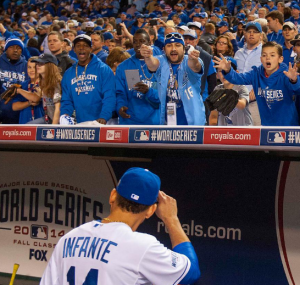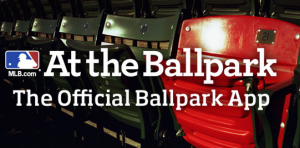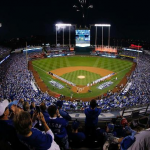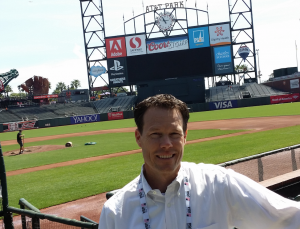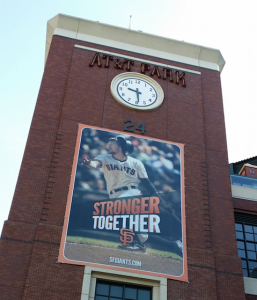Though this year’s World Series still isn’t over, the three games this past weekend in San Francisco set new local records for fan Wi-Fi use, arguably cementing AT&T Park’s title as baseball’s best-connected stadium.
One of the more stunning numbers provided to us by Bill Schlough, the senior vice president and CIO for the Giants, was that nearly half the crowd in AT&T Park for Sunday’s Game 5 used the Wi-Fi network — a “take rate” we’ve never heard of before at any sporting event of any kind. According to Schlough the Giants’ Wi-Fi network had 20,638 unique users during Game 5, a take rate of 49.7 percent. (According to the official box score, the attendance that night was 43,087, give or take a Panda or four.) The game also set an AT&T Park record for Wi-Fi upload traffic with 747 Gigabytes of data being sent by people at the park out to the network.
(Including one special photo tweeted out by a former Giant you may have heard of.)
Hanging With @kanyewest @KimKardashian @SFGiants Game time Yes Yes Yes⚾️⚾️⚾️⚾️⚾️@BondsPat pic.twitter.com/82xaSl9Hlb
— Barry L Bonds (@BarryBonds) October 27, 2014
A record for downloaded Wi-Fi traffic, of 937 GB, was set during Friday night’s Game 3, and the record for a combination of download and upload traffic was set during Game 4, with a total of 1.62 Terabytes. According to Schlough, the total data transferred during the eight games of the 2014 postseason at AT&T Park was 10.3 TB, which is easily the high-water mark for any baseball stadium network we know of. (The total does not include regular cellular traffic carried by the AT&T Park DAS; we will add those numbers in when they become available.)
And while individual games such as Super Bowls or contests down the San Francisco Peninsula at Levi’s Stadium may set higher overall marks (thanks in part to having more fans in the building), we’d be interested to see if any other stadium networks can match AT&T Park’s season-long data number of 59.3 TB, which according to Schlough represents total traffic over 2014’s 91 games (regular and postseason) at AT&T Park.
One more fun number from Schlough: Since the park turned on its fan-facing Wi-Fi network in 2004, there have been 4,085,518 Wi-Fi connections during the 946 game days. Kansas City’s Kaufmann Stadium, which just got its Wi-Fi network installed recently, has one or two more games this season to start trying to catch the Giants from a networking perspective.
UPDATE: Looks like the Royals are claiming some already-decent usage of their Wi-Fi network:
Almost 100K fans have utilized it during our recent testing and tuning, but now it’s official: free RoyalsWiFi available at #TheK!
— Kansas City Royals (@Royals) October 28, 2014
